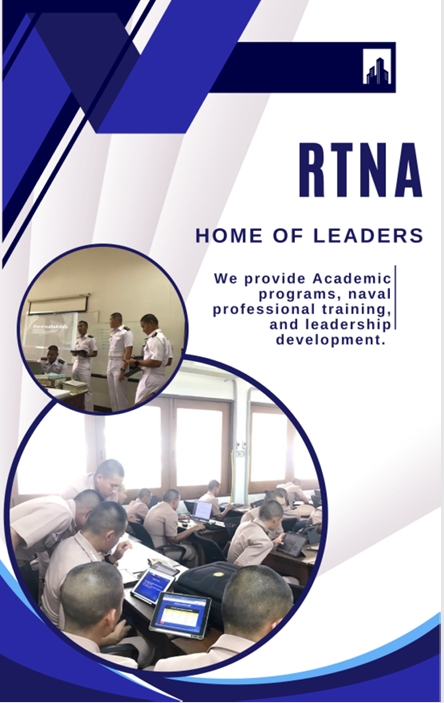A Need Assessment for Development Academic Management of Schools under Samutprakan Primary Educational Service Area Office 1 Based on the Concept of Learning Agility
Keywords:
Developing Academic Management, Learning Agility, Needs AssessmentAbstract
The objectives of this research were to conduct the needs assessment for developing academic management of schools under Samutprakan’s Primary Educational Service Area Office 1, based on the concept of learning agility. The population was 72 schools under Samutprakan Primary Educational Service Area Office 1. The sample of informants were 244 people, including school directors, deputy directors or academic department heads, and teachers. Stratified sampling, based on the groups and sizes of the schools was employed. The research instrument used was an opinion questionnaire on the approaches to the development of academic management in schools under Samutprakan Primary Educational Service Area Office 1, based on the concept of learning agility. The data were analyzed by frequency distribution, percentage, mean, standard deviation, and Priority Needs Index Modified. When the priority needs index per item was analyzed, instruction was identified as the highest priority need (PNIModified = 0.421), followed by curriculum development (PNIModified = 0.418) as the second priority need. The lowest priority need was assessment (PNIModified = 0.414). The research results showed the need of developing academic management to encourage learning agility arrange learners.
References
นัทธนันท์ สุชาตตระกูล, ไพรภ รัตนชูวงศ์, พูนชัย ยาวิราช, และสมบูรณ์ อริยา. (2563). การพัฒนารูปแบบการบริหารงานวิชาการตามแนวคิดการจัดการเรียนรู้ ที่เสริมสร้างทักษะชีวิตในศตวรรษที่ 21 ของนักเรียนระดับประถมศึกษา. วารสารการบริหารการศึกษาและภาวะผู้นํา มหาวิทยาลัยราชภัฏสกลนคร, 8(32), 224-230.
วิจารณ์ พานิช. (2558). วิถีสร้างการเรียนรู้เพื่อศิษย์ในศตวรรษที่ 21. Walailak Journal of Learning Innovations, 1(2), 3-14.
ศิริ ถีอาสนา และเฉลิมเกียรติ ถีอาสนา. (2565). ผลลัพธ์ที่พึงประสงค์ของผู้เรียน ตามนโยบายแห่งรัฐด้านการจัดการอาชีวศึกษา. Vocational Education Central Region Journal, 6(1), 1-9.
ศูนย์ดำเนินงาน PISA แห่งชาติ สถาบันส่งเสริมการสอนวิทยาศาสตร์และเทคโนโลยี. (2564). ผลการประเมิน PISA 2018 การอ่าน คณิตศาสตร์ และวิทยาศาสตร์. สถาบันส่งเสริมการสอนวิทยาศาสตร์และเทคโนโลยี (สสวท.).
สำนักงานเขตพื้นที่การศึกษาประถมศึกษาสมุทรปราการเขต 1. (2565). แผนปฏิบัติการประจำปี งบประมาณ พ.ศ.2565. สำนักงานเขตพื้นที่การศึกษาประถมศึกษาสมุทรปราการ เขต 1.
สำนักงานเขตพื้นที่การศึกษาประถมศึกษาสมุทรปราการเขต 1. (2565). รายงานผลการดําเนินงานประจําปีงบประมาณ 2565. สำนักงานเขตพื้นที่การศึกษาประถมศึกษาสมุทรปราการเขต 1.
สุกัญญา แช่มช้อย. (2565). การบริหารวิชาการที่ตอบสนองการเปลี่ยนแปลงของโลกยุคพลิกผัน. สำนักพิมพ์จุฬาลงกรณ์มหาวิทยาลัย.
อรวรรณ นาเพ็ชร, กชกร พละบุตร, กชวรรณ เหลาทอง, กมล เหมอ่อน, กนกพร มิรัตนไพร, กนกอร นิพขันธุ์, กรรภิรมย์ สีหะวงษ์, กัญจนาภรณ์ หอมชื่น, และทศา ชัยวรรณวรรต. (2560). การตระหนักรู้ในตนเองและการรับรู้ประโยชน์ของการตระหนักรู้ในตนเองของนักศึกษาพยาบาลมหาวิทยาลัยเอกชนแห่งหนึ่งในจังหวัดอุบลราชธานี. Journal of Ratchathani Innovative Health Sciences, 2(2), 60-73.
อัญชลี คล้ายขํา, ปิยะนันท์ หิรัณย์ชโลทร, และชลาธิป สมาหิโต. (2564). การจัดกิจกรรมการเรียนรู้โดยใช้วรรณกรรมเป็นฐานเพื่อส่งเสริมการตระหนักรู้ในตนเองของเด็กปฐมวัย. Journal of Education Rajabhat Maha Sarakham University, 18(3), 195-207.
เอกราช ล้อแก้ว และสมใจ สืบเสาะ. (2565). บทบาทของผู้บริหารสถานศึกษาในการสนับสนุนการจัดการเรียนการสอนที่เน้นผู้เรียนเป็นสำคัญในทัศนะของผู้ปกครองนักเรียน ในกลุ่มโรงเรียนไชยราชช้างแรกสังกัดสำนักงานเขตพื้นที่การศึกษาประถมศึกษาประจวบคีรีขันธ์เขต 1. วารสารนวัตกรรมการบริหารและการจัดการ, 10(1), 76-86.
Burke, W. W., & Hoff, D. F. (2017). Learning agility: The key to leader potential. Tulsa, OK.
Flavian, H. (2016). Towards teaching and beyond: Strengthening education by understanding students’ self-awareness development. Power and Education, 8(1), 88-100.
Gochman, I., & Storfer, P. (2014). Talent for tomorrow: Four secrets for HR agility in an uncertain world. People and Strategy, 37(2), 24.
Gravett, L. S., & Caldwell, S. A. (2016). Learning agility: The impact on recruitment and retention. Springer.
Hmelo-Silver, C. E., Duncan, R. G., & Chinn, C. A. (2007). Scaffolding and achievement in problem-based and inquiry learning: a response to Kirschner, Sweller, and Clark (2006). Educational psychologist, 42(2), 99-107.
Kolb, D. A. (2014). Experiential learning: Experience as the source of learning and development. FT press.
Lave, J., & Wenger, E. (1991). Situated learning: Legitimate peripheral participation. Cambridge university press.
McMillan, J. H., & Hearn, J. (2008). Student self-assessment: The key to stronger student motivation and higher achievement. Educational horizons, 87(1), 40-49.
Organisation for Economic Co-operation and Development. (2018). The future of education and skills: Education 2030. OECD Education Working Papers.
Organisation for Economic Co-operation and Development. (2019). 21st Century Learning: Research, Innovation and Policy. O. E. W. Papers.
Zimmerman, B. J., & Schunk, D. H. (2011). Handbook of self-regulation of learning and performance. Routledge/Taylor & Francis Group.

Downloads
Published
Issue
Section
License
Copyright (c) 2024 Royal Thai Naval Academy

This work is licensed under a Creative Commons Attribution-NonCommercial-NoDerivatives 4.0 International License.
The author has the sole responsibility for the material published in RTNA Journal of Social Sciences, Humanities, and Education, which the editorial team may not agree on that material.
RTNA Journal of Social Sciences, Humanities, and Education owns the copyright of the text, the illustration, or other material published in the journal. No parts or the whole of the material published may be disseminated or used in any form without first obtaining written permission from the academy.





